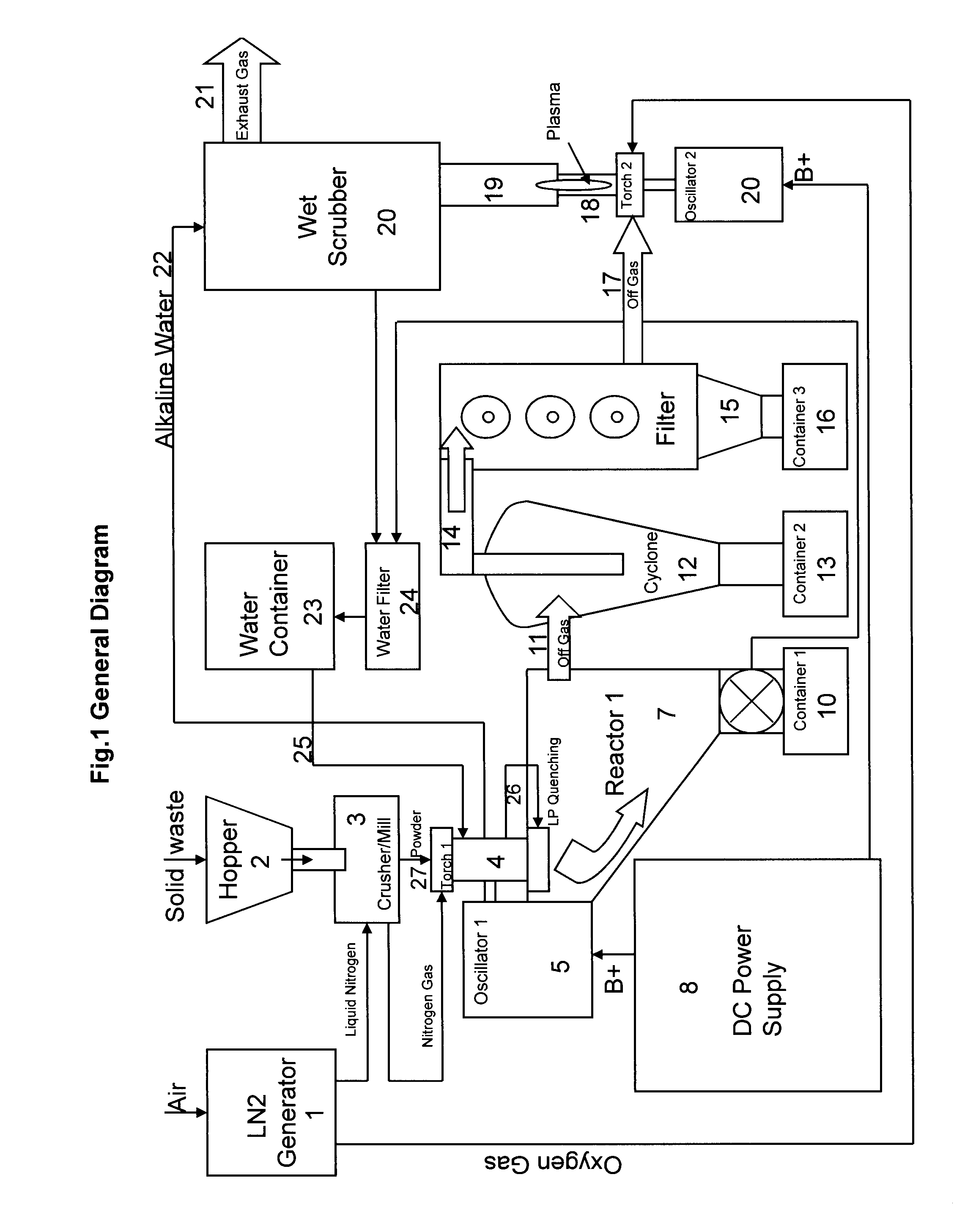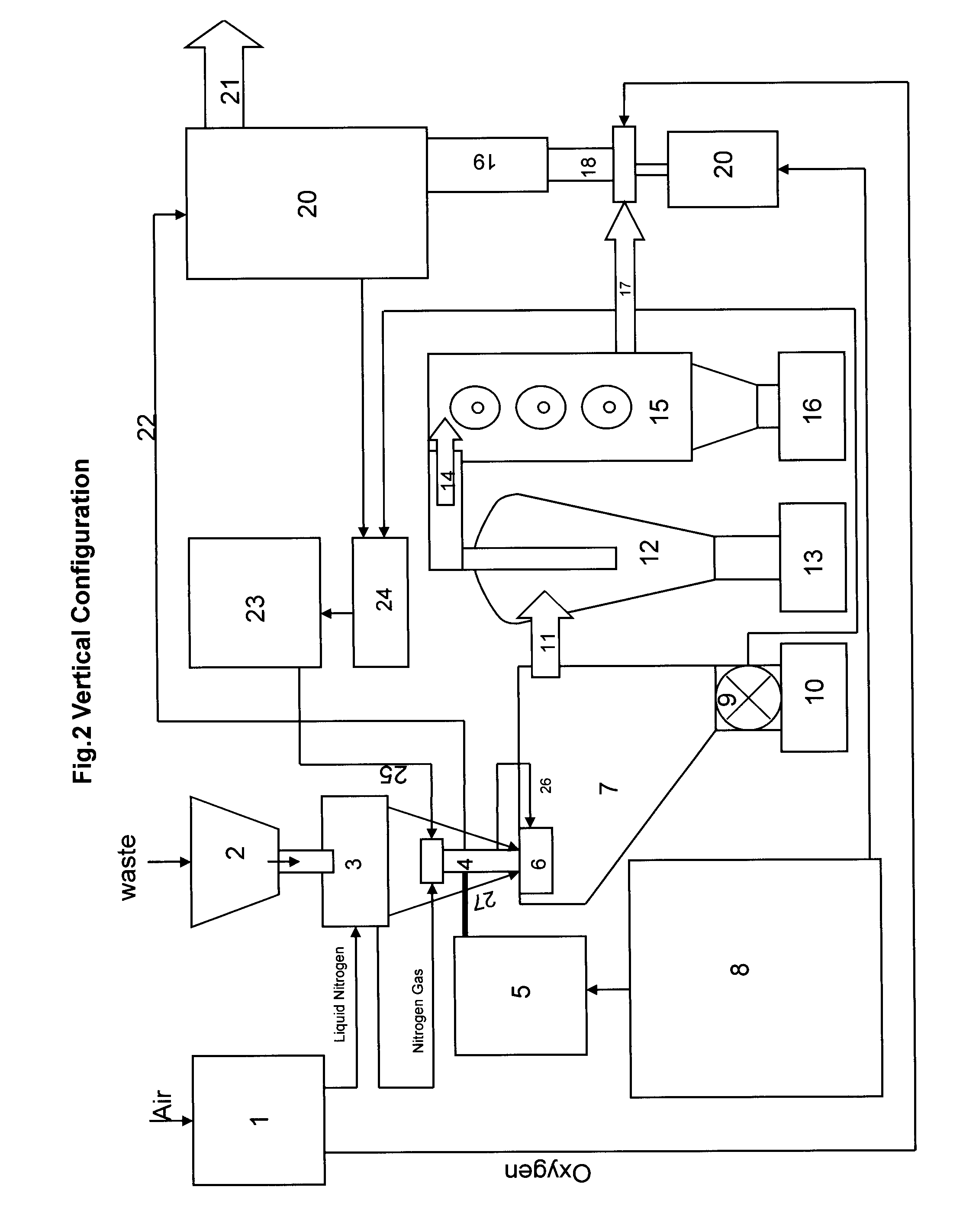RF plasma system for medical waste treatment
a technology of medical waste and plasma, which is applied in the field of medical waste treatment, can solve the problems of reducing the pre-crushing energy and brittleness of feed materials, and achieve the effects of reducing the infectious potential of medical waste, improving the throughput of medical waste, and improving the reduction of toxic gas exhaus
- Summary
- Abstract
- Description
- Claims
- Application Information
AI Technical Summary
Benefits of technology
Problems solved by technology
Method used
Image
Examples
example
[0036]Mixed medical waste was shredded and pulverized using the Hosokawa Liquid Nitrogen mill. Average particle size of the powder was about 100 microns. The powder was delivered into the induction plasma jet by using K-Tron feeding system at feed rate about 45 kg / hr. Plasma power was 55 kW at working frequency 2 MHz. Plasma temperatures is developed by varying the discharge power and Nitrogen gas flow rate. Quenching device was designed in order to atomize low pH water and deliver it to the plasma reactor. Quenching rate was about 3×103 K / sec. The solid part of the processed material was collected in Container 1 and consists of 95% of total feed waste. The rest of the processed material was collected in Containers 2 and 3. Off gas from the filter unit was mixed with oxygen at ratio 1:1, and processed in capacitive plasma module with the following parameters: plasma power −10 kW; frequency −13.56 MHz; gas flow rate −20 m3 / Hr; Torch configuration: co-axial. Cylindrical electrodes wer...
PUM
| Property | Measurement | Unit |
|---|---|---|
| pressure | aaaaa | aaaaa |
| particle size | aaaaa | aaaaa |
| particle size | aaaaa | aaaaa |
Abstract
Description
Claims
Application Information
 Login to View More
Login to View More - R&D
- Intellectual Property
- Life Sciences
- Materials
- Tech Scout
- Unparalleled Data Quality
- Higher Quality Content
- 60% Fewer Hallucinations
Browse by: Latest US Patents, China's latest patents, Technical Efficacy Thesaurus, Application Domain, Technology Topic, Popular Technical Reports.
© 2025 PatSnap. All rights reserved.Legal|Privacy policy|Modern Slavery Act Transparency Statement|Sitemap|About US| Contact US: help@patsnap.com



